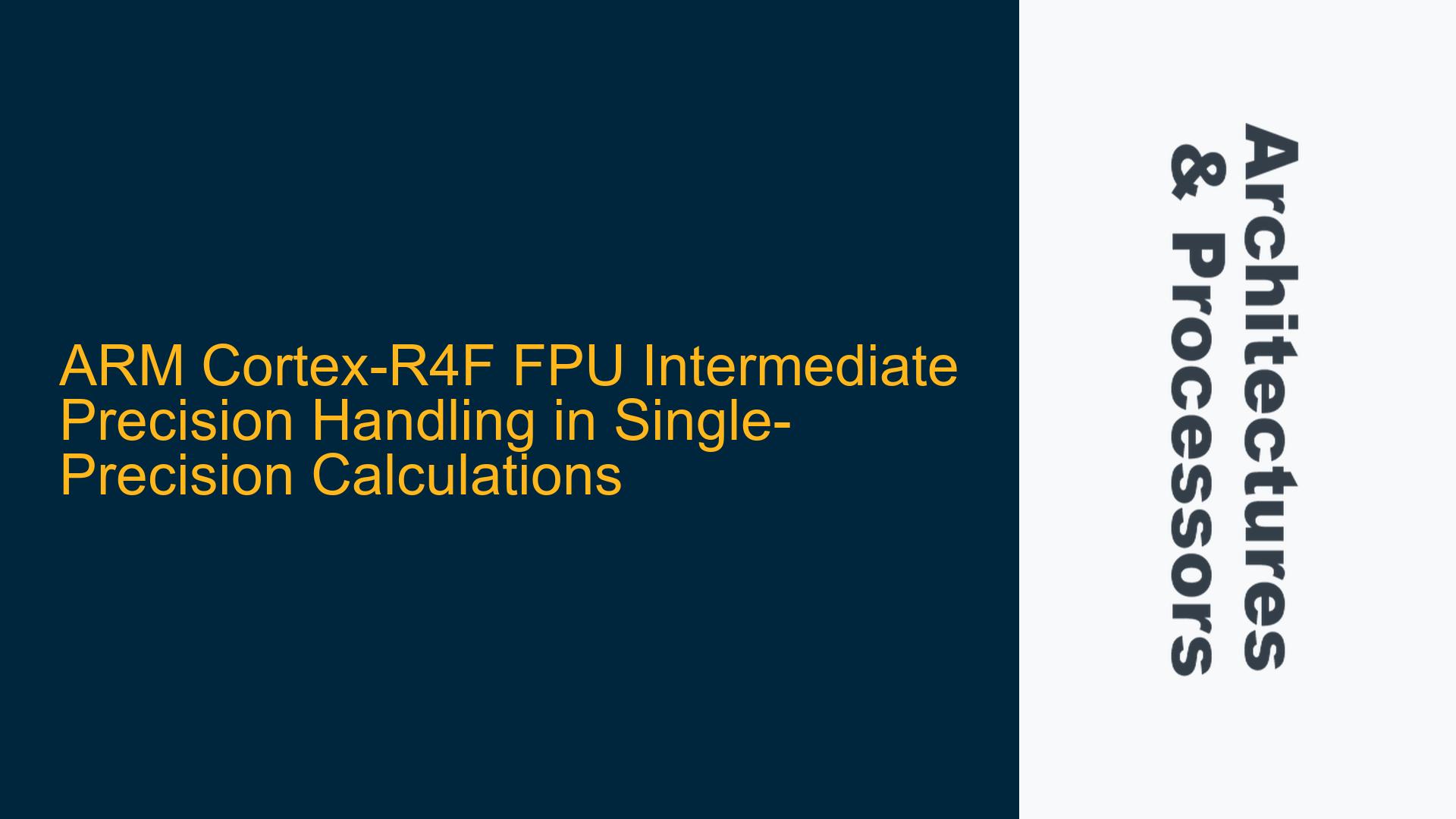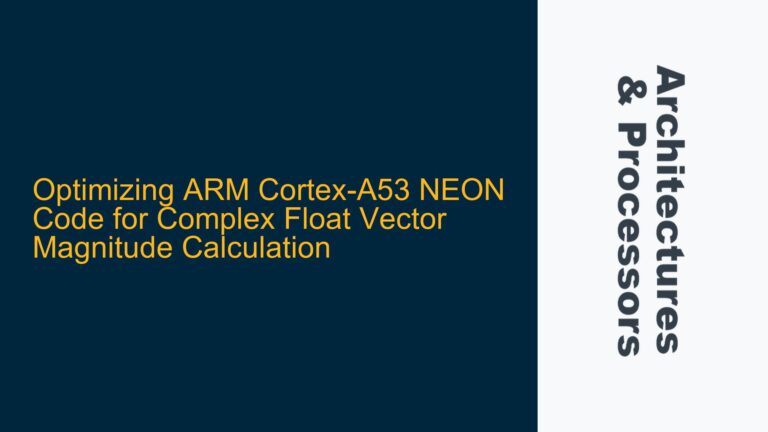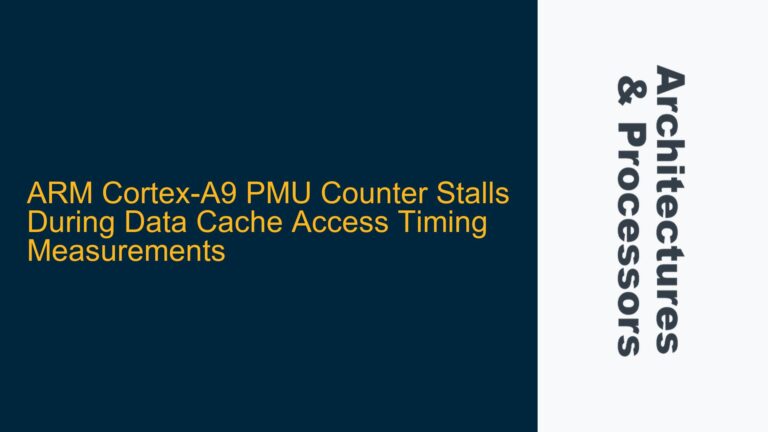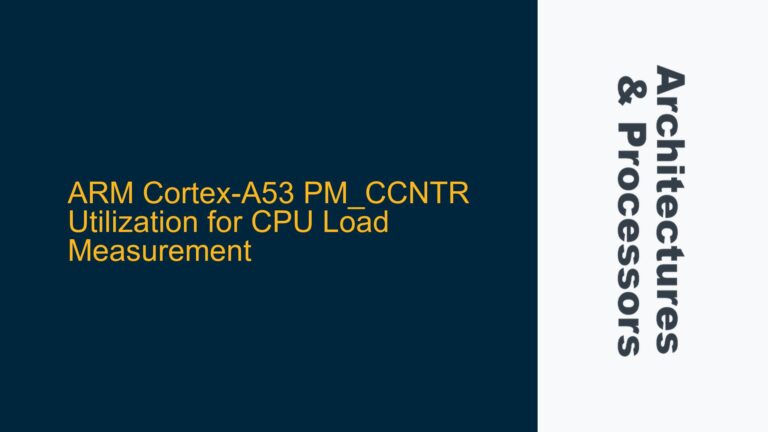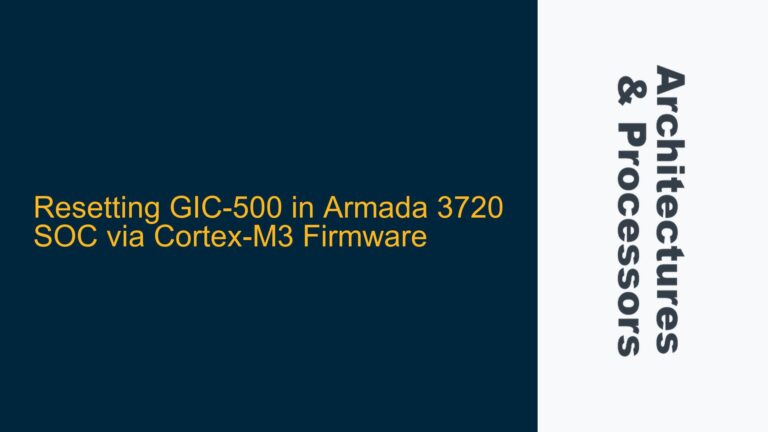ARM Cortex-R4F FPU Internal Precision Behavior for Single-Precision Operations
The ARM Cortex-R4F Floating-Point Unit (FPU) is designed to handle single-precision (32-bit) and double-precision (64-bit) floating-point operations. A key question arises regarding how the FPU manages intermediate results during single-precision calculations. Specifically, does the FPU internally use higher precision (e.g., double precision) to store intermediate results before rounding and storing the final result in single precision? This behavior is critical for understanding the accuracy and precision of floating-point computations on the Cortex-R4F.
The Cortex-R4F FPU adheres to the IEEE 754 standard for floating-point arithmetic, which defines how floating-point operations should be performed, including rounding and precision handling. However, the standard does not mandate the use of higher precision for intermediate results. Instead, it allows implementations to choose whether to use extended precision internally. This flexibility can lead to differences in behavior across architectures, such as Intel x87 FPUs, which historically used 80-bit extended precision for intermediate results, and ARM FPUs, which may or may not follow a similar approach.
In the case of the Cortex-R4F, the FPU documentation indicates that it primarily operates on single-precision and double-precision registers. While the FPU does not explicitly state the use of extended precision for intermediate results, its behavior can be inferred from its architecture and compliance with IEEE 754. The Cortex-R4F FPU is optimized for deterministic real-time performance, which may influence its handling of intermediate precision. Understanding this behavior is essential for developers working on applications where numerical accuracy and consistency are critical, such as control systems, signal processing, and scientific computing.
Potential Misconceptions About FPU Intermediate Precision and Compiler Behavior
One common source of confusion is the distinction between hardware-level FPU behavior and software-level compiler optimizations. High-level language compilers, such as those for C or C++, often implement floating-point operations in ways that may not directly reflect the underlying hardware behavior. For example, a compiler might optimize floating-point calculations by reordering operations or using fused multiply-add (FMA) instructions, which can affect the precision of intermediate results. This can lead to discrepancies between what the hardware is capable of and what the software actually does.
In the context of the Cortex-R4F, the FPU hardware is designed to handle single-precision and double-precision operations natively. However, the compiler’s code generation strategy can influence whether intermediate results are computed at higher precision. For instance, if the compiler generates code that promotes single-precision operands to double precision for intermediate calculations, the final result may exhibit higher accuracy than if the operations were performed strictly in single precision. This behavior is often controlled by compiler flags, such as -ffloat-store in GCC, which can prevent the compiler from using higher precision for intermediate results.
Another potential source of confusion is the assumption that the Cortex-R4F FPU behaves similarly to Intel x87 FPUs, which historically used 80-bit extended precision for intermediate results. While this approach can improve accuracy, it also introduces non-determinism due to variations in rounding behavior. The Cortex-R4F FPU, by contrast, is designed for deterministic real-time performance, which may preclude the use of extended precision for intermediate results. This distinction is crucial for developers who need to ensure consistent behavior across different platforms or who are porting code from x86 to ARM architectures.
Verifying and Controlling Intermediate Precision in Cortex-R4F FPU Calculations
To determine how the Cortex-R4F FPU handles intermediate precision, developers can perform empirical testing and consult the processor’s technical documentation. Empirical testing involves writing test programs that perform a series of floating-point operations and measure the precision of intermediate results. For example, a test program could compute a sequence of arithmetic operations and compare the results obtained using single-precision and double-precision operands. Discrepancies between the results can indicate whether the FPU is using higher precision for intermediate calculations.
The Cortex-R4F Technical Reference Manual (TRM) provides detailed information about the FPU’s architecture and behavior. According to the TRM, the Cortex-R4F FPU supports single-precision and double-precision operations but does not explicitly mention the use of extended precision for intermediate results. This suggests that the FPU may perform intermediate calculations at the same precision as the operands, rounding the results as specified by the IEEE 754 standard. However, the TRM also notes that the FPU supports fused multiply-add (FMA) operations, which can affect the precision of intermediate results by combining multiplication and addition into a single operation.
Developers can control the precision of floating-point calculations using compiler flags and runtime settings. For example, the -frounding-math flag in GCC ensures that floating-point operations adhere to the specified rounding mode, which can help maintain consistency across different platforms. Additionally, the -ffp-contract flag controls whether the compiler generates FMA instructions, which can affect the precision of intermediate results. By carefully selecting these flags, developers can ensure that their code behaves predictably on the Cortex-R4F FPU.
In summary, the Cortex-R4F FPU is designed to handle single-precision and double-precision floating-point operations with deterministic behavior. While it does not explicitly use extended precision for intermediate results, its compliance with the IEEE 754 standard ensures accurate and consistent computation. Developers can verify and control the precision of floating-point calculations through empirical testing, careful reading of the technical documentation, and the use of appropriate compiler flags. Understanding these nuances is essential for achieving reliable and accurate results in applications that rely on floating-point arithmetic.
